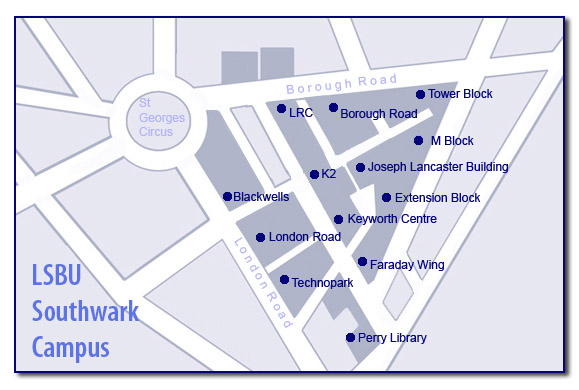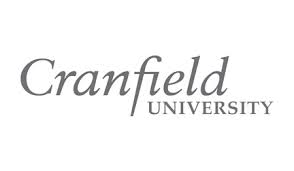Decarbonised Energy Networks
Cross sector integrated supply chains for energy systems
ICAX and CEREB plan to build a Decarbonised Energy Network at the London South Bank University site in Southwark in conjunction with consortium partners.
The consortium aims to bring together cross-sector supply chains to deliver integrated energy solutions at different scales to meet the energy systems challenges of achieving a low-carbon economy: secure, affordable, sustainable energy.
The heart of the network is the efficient use of renewable energy based on the recycling of solar heat (from the summer) to thermal energy storage in the ground through the autumn to the time of need for heat (in winter).
Heat pumps will be used to transfer heat to buildings in winter instead of generating heat afresh when needed by burning fossil fuels. The consortium plans to develop heat pumps that will deliver heat at high temperatures and can be used directly by existing heat distributions systems.
Heat will be recovered from buildings needing cooling and transferred to those needing heating and domestic hot water.
Balancing the supply and demand for heat through the seasons will be mirrored by balancing the supply and demand for electric power by shifting some of the demand from times of peak consumption (by day) to times of excess supply (by night).
The consortium plans to use the Origen Power process to deliver a highly disruptive technology that could have hugely beneficial social, environmental and economic benefits at a UK, EU and global level. The process uses natural gas to generate electricity in a way that removes CO2 from the atmosphere. It would allow fossil fuels to remain part of the energy-mix in a low-carbon future and also to become part of the solution to climate change by using the energy in fossil fuels to remove CO2 from the atmosphere.
The consortium consists of:
- ICAX which has developed Interseasonal Heat Transfer to enable buildings to be heated in winter with solar energy captured in the previous summer.
- The Centre for Efficient and Renewable Energy in Buildings, CEREB, is London South Bank University's unique, teaching, research and demonstration resource for the built environment, hosting a number of renewable and intelligent energy solutions.
- Terra Firma Ground Investigation have expertise in open and closed loop borehole drilling for exploiting ground source energy.
- Upside Energy is developing software to control distributed electrical storage in batteries in UPS systems and electric vehicles in order to release electricity to the grid at peak demand and replenish it from the grid at times of strong supply.
- Mixergy has developed heavily insulated domestic hot water tanks with novel inlet stratification to allow extended thermal energy storage.
- Origen Power and Cranfield University are developing the Origen Power process which enables electricity to be generated in a way that removes CO2 from the atmosphere.
- The GLA is contributing to the consortium as a stakeholder with an interest in maintaining and protecting London’s environment and resources (water, energy and waste) and ensuring that they are used more efficiently. The Greater London Authority is working to reduce air pollution and greenhouse gas emissions in London, to help tackle climate change and increase the city’s resilience to extreme weather.
- Winckworth Sherwood is contributing time to advise on resolving the legal barriers to establishing district heating networks.
Heat Sharing Networks are designed to provide a more cost effective, flexible, and scalable alternative to conventional district heating network technology. Heat Sharing Networks transfer warmth via an underground piping circuit between buildings at near ground temperature and extract it via heat pumps in each building: an intranet of heat.
This radical innovation will allow the integration of diverse energy systems through the recovery of low grade waste heat, delivery of simultaneous heating and cooling, links to heat storage in boreholes and provides lower installation costs by making use of existing infrastructure, none of which are possible with conventional high temperature heat networks.
When buildings require cooling then heat can also released into the district circuit and this benefits those buildings that need heating. This results in a flexible heat sharing network that is to the advantage of both those releasing heat and those extracting heat.
The Intranet of Heat
This new heat infrastructure is the birth of an "Intranet of Heat". The Intranet of Heat enables the exchange of information about sources and needs of heat – and cooling – and then allows heat exchange from those buildings with surplus heat to those in need of heat: BEN contributes to the circular economy.

The Energy Trilemma
The BEN Consortium is accepting the challenge from DECC to provide an answer to the Energy Policy Trilemma:
- by using heat networks,
- by using heat transfer instead of combustion,
- by delivering a heat sharing dividend,
- by accelerating the electrification of heat
- and by employing "demand response" to shift the timing of electricity demand.
Demand response can be used to shift the timing of electric demand from hours of peak demand to times of surplus supply. This requires a bi-directional energy grid to signal when prices are low to trigger additional use (and to signal when prices are high to inhibit additional use).
See Ground Source Heating See Ground Source Cooling See Ground Source Energy
See also: Economic Renewable Energy










